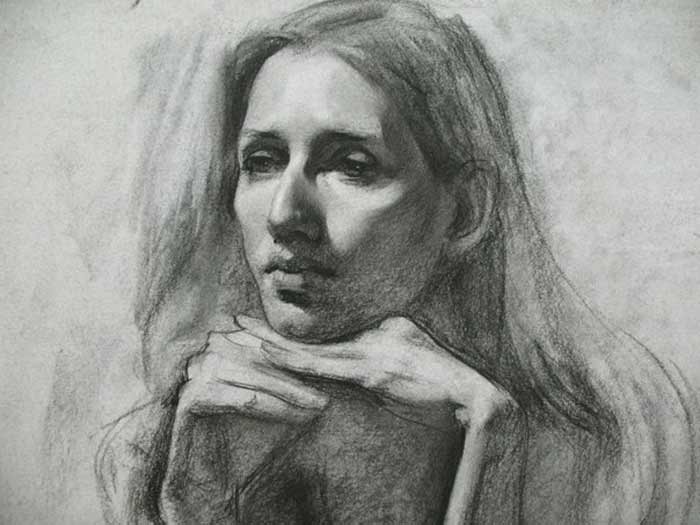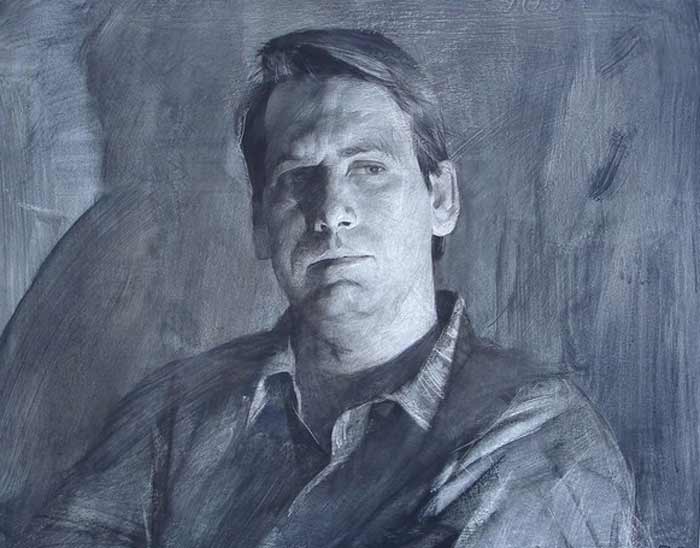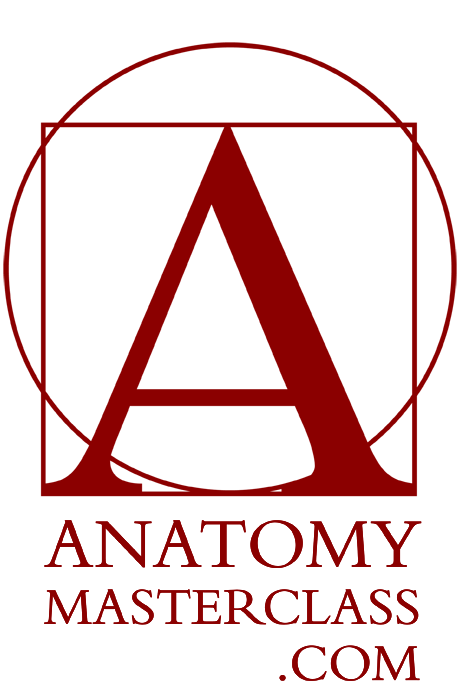Face Anatomy
Face Anatomy
Anatomy Lesson 5 – Part 2
In this video lesson, you will find out what face anatomy features a portrait artist must know.
Face Anatomy in Portrait Drawing
There are more than 60 muscles in the human head, including some that begin in the neck. However, as a fine artist, you don’t need to know every last muscle. In this lesson, we will examine the face anatomy with only those muscles that contribute to facial expressions and the shape of the head.
The muscle on the forehead and the back of the head covers the entire top of the skull like a skullcap, running from the eyebrows to the bottom rear edge of the skull.
The portion of this muscle that covers the forehead is called the frontalis. When contracted, it raises one or both eyebrows in expressions of surprise, disbelief, and sometimes sadness or grief.
The round muscle of the eye is called the orbicularis oculi. This muscle has two portions – orbital and palpebral. The orbital portion looks like a disc that covers the eyeball, while the papebral portion is located within eyelids.
As a fine artist, you need to keep in mind that eyelids have a thickness that you need to depict in realistic portraits.
The orbital portion of the eye’s round muscle is responsible for squeezing or narrowing the eyes. It causes the crow’s feet wrinkles that can form in the outer corner of the eye.
The palpebral portion of the muscle gently closes and opens the eyelids, when blinking, for example.
Beneath the round muscle of the eye, there is a pair of muscles that contract the eyebrows.
Nearby is another pair of muscles that depress the eyebrows.





On both sides of the nose are muscles called the nasalis. These muscles allow the nostrils to compress and expand.
Next to the nasalis is another pair of muscles with a very long Latin name, which you, as a fine artist, have no reason to memorise. Anyway, this muscle group elevates the upper lip as well as the wing of the nose. This muscle creates various wrinkles at the sides and the bridge of the nose and gives an expression of disgust.
On both sides of the nose is a pair of muscles that elevates the upper lip. These muscles can work together to lift the entire upper lip, or separately, lifting only one side at a time.
Next to this muscle group are two more muscles that run side by side – the zygomaticus minor and the zygomaticus major. These muscles pull the upper lip upward and outward, elevating its corners in a smile.
The primary mouth muscle is called the orbicularis oris. It has an oval shape and goes around the mouth, forming the lips. The main action of this muscle is to close lips.
Many other muscles intervene with this mouth muscle and influence the face anatomy. Together, they move the mouth into different positions and contribute to lip movements and speech.
Running horizontally from the corner of the mouth is the muscle called the risorius, which pulls the corners of the mouth outward.
The muscle called the masseter is a very strong muscle that runs between the cheekbone and the lower jaw. It is responsible for closing the mouth and chewing. Its presence is noticeable when a person clenches their teeth.
Between the mouth corner and the edge of the lower jaw is a muscle called the depressor anguli oris. It has triangular shape. When this muscle contracts, it pulls the corners of the mouth downward, creating an expression of disapproval or sadness. It works in the opposite direction to the muscle that makes a smile.
Underneath this sadness muscle is another one between the lower lip and the edge of the lower jaw. This muscle is called the depressor labii inferioris. It pulls the lower lip downward when it contracts, exposing the lower teeth.
The depressor labii inferioris partially covers yet another muscle between the lower lip and the edge of the lower jaw. This muscle is called the mentalis. When the mentalis contracts, it pushes the lower lip upward and outward. It contributes to expressions of doubt, anger, or determination.
The fan-shaped muscle on the side of the head is called the temporalis. It is a powerful, flat muscle that pulls the lower jaw upward. Usually it is covered by hair, but on a bald head it is easy discernible, especially when a person is chewing. This muscle runs beneath the cheekbone and connects to the coracoids process of the lower jaw, which is a projection of the jaw that looks like a shark fin.
These are the main muscles of the human head that influence the face anatomy and movements of the lower jaw and the appearance of emotion.
[ The full lesson is avaibale to Anatomy Master Class members ]
To learn more about face anatomy, enrol in the Anatomy Master Class
Simple Pricing, No Surprises
One-time payment - Only $97 USD
ENROLL NOW



